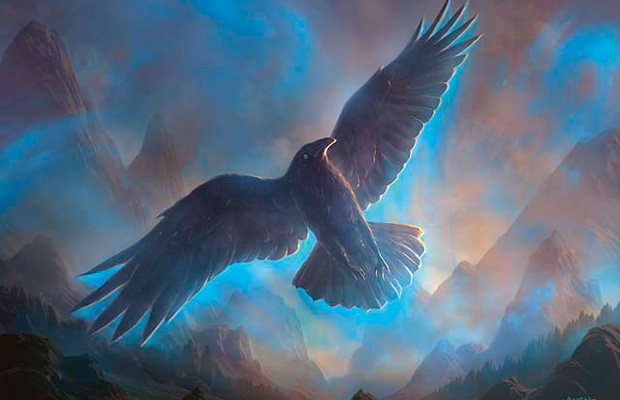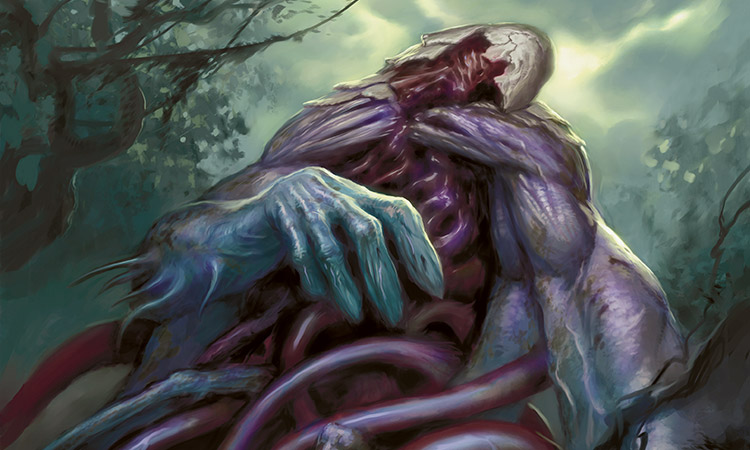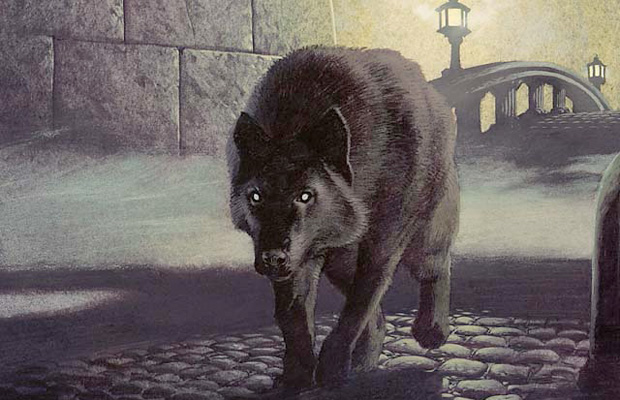
Hey everybody.
Over the past few months, I’ve been working on a major project, and in this post I’m going to give you the first look at it.
I’ve been compiling the stats of creatures in Magic limited formats over the past few months, going through every set and carefully cataloging every creature along a variety of metrics. With the release of Eldritch Moon, I’ve completed this catalog, and so I’ve got a bunch of spreadsheets and charts to debut. In this post, I’m going to link to each of the spreadsheets and charts, leaving all the data out in the open. I haven’t written an article about this yet, but I’ll be doing so in the near future; it’s just a massive project with tons of analysis to do, so it might take me a while to put together all the information in a coherent way. In any case, feel free to take a look for yourself, browse through the info, and see what you can see! I’ll be updating this information periodically; with each set release at least, and I plan on adding some other sets as I go along.
The information covers the expert level expansions from Invasion to Eldritch Moon. This does not include core sets or masters sets. I’ll probably put together an analysis of those in the future. I also plan on going back to do the pre-Invasion sets at some point, but that’s a future project.
Also, there are some caveats. First, remember that a lot of the ratings are subjective by necessity. I had to go through and give the cards ratings, and there isn’t any perfectly concrete way to do this. I tried to make the best and most objective judgment that I could, but there may be some particulars that you disagree with, and that’s okay. This is why I’ve made the data available. If you want to go in and tweak things a little bit, feel free to do so.

The Metrics
There’s a variety of different metrics in these charts, so I figure I’ll talk about them for a second so that it makes more sense when you look at them.
Color – This is the creatures color. Currently I’m not factoring this into any calculations, but the framework is there to do so. One note, I started out noting multicolor cards as Z, but I changed to noting the cards Guild/Shard. I haven’t gone back and updated all the old sets to reflect that change, but I will at some point, which will enable some more in depth analysis of creatures in particular colors.
Rarity – The rarity of the card. C is common, U is uncommon, R is rare, M is mythic. The rarity of the cards is important, because all of the calculations done for these sets is by rarity weight, which basically factors in how often a card shows up in a pack for the averages. The entire analysis hinges on this, so it’s pretty important.
CMC – This is the converted mana cost of the card. This does not necessarily reflect the actual printed CMC, but the normal use case for the card. This is usually the same, but there are occasions where it comes into the calculations for the CMC.
Power – The power of the creature. Again, this is designed to reflect normal use case rather than just printed power.
Toughness – The toughness of the creature.
Alt CMC, Power, Toughness – I’m not currently using this for anything, but these categories are supposed to reflect alternate use cases of the cards. I wanted it in the framework so that I could play around with it in the future, but I don’t know what I would do with it yet.
Evasion – A rating of how evasive the card is. This is on a 0-4 rating. 0 equals no evasion. 1 is a slight combat ability like first strike. Essentially, there’s a small thing getting in the way of blocking it profitably, but you can usually block it if you want to. 2 is something that you can block around half the time, or something that you have to put a lot of work into if you want to block it. Menace or intimidate are good examples of evasion that gets a 2. The 3 rating is for flying or comparable abilities, things that you can’t block most of the time, unless you dedicate particular cards to that job. 4 is unblockable.
Utility – This is the most subjective of the categories, by necessity. It is meant to reflect the strength of the non-combat function of the creature. However, this is a really big umbrella term covering things like deck manipulation, removal abilities, combat enhancement, or mana sink abilities. A 0 means no additional utility; it’s basically just a vanilla creature. A 1 means it has a minimal ability that has a very small impact on the game, something like gaining 1 or 2 life. These are cards where the value of the creature lies more in the creature’s body. A 2 is an ability that has a relevant but measured impact on the game an example would be Thraben Inspectors Investigate ability. It also points to cards that have a minimal ability that is repeatable, like if a card had T: Gain 1 life. A 3 is an ability that has a substantial impact on the game; it is an ability that is worth a reasonable spell, but not one that is on par with top tier removal. For example, a card like Mist Raven would go in this category. It also represents creatures with a 2 level ability that is repeatable, like a Serene Steward. The 4 category is for cards that have an ability on par with a removal like ability in addition to their creature stats; this would be something like Nekrataal. It can also have a repeatable effect that has a dramatic effect on the board, like Phalanx Leader from Theros block. Finally, there is the 5 category, which is for cards that have a bomb like effect in addition to their normal creature stats. This would be card like Whisperwood Elemental or Dragonlord Silumgar.
Card Advantage (CA) – This is how many cards you get in addition to the creature. This is a pretty simple stat, though it also is meant to represent normal use case.
Drawback – This is meant to represent the setup cost or difficulty in casting a creature or making use of it. This is another category that is inherently subjective, but I tried to come up with good pointing for it. A 0 means no drawback; you can just cast the card and it does what it does without any extra work. A 1 means a minimal drawback, usually one that restricts the kind of deck that you can put the card into. For example, multicolor cards get a 1 up front, but another example would be creatures with Landfall, which I rated as if they had their landfall ability, but with a drawback in case you didn’t play one. A 2 is a medium impact that means you might have difficulty playing the card even if you’ve put it into the right deck. This might be an important loss of life or a difficult mana cost. Three colored multi-color cards got this inherently. Another example would be something like Grove Rumbler which is both multi-color and has a landfall ability, compounding the drawbacks. A 3 is for a substantial drawback, usually on the level of the loss of a card, or a substantial loss of tempo. Two great examples would be From Beyond, which makes tokens but not immediately when you play the card or Pale Rider of Trostad, which makes you discard a card. A 4 is a dramatic drawback that will greatly restrict your ability to play the card. Not only do you have to put it into the right deck, but you’re going to have to warp the deck around using the card. An example would be Mindwrack Demon, which will outright kill you if you don’t build around delirum. A 5 is a severely limiting drawback that makes the creature unplayable in the vast majority of circumstances.

Derived Metrics
Along with all of these metrics, I’ve included several derived metrics.
P/T Diff – This is the power/toughness differential, or the power toughness subtracted from the power. A negative number means the toughness is higher, a positive number means the power is higher.
P/CMC – The power divided by the CMC. This is how much power you get for each mana of its converted mana cost, and represents the efficiency of a creature’s power.
T/CMC – The toughness divided by the CMC. Similar to the same metric for power.
PT/CMC – This is the combined power and toughness divided by the CMC. This metric gives you an idea of the efficiency of the entire size of the creature.
Total PT – Power plus toughness, for the total stats of the creature, giving you an idea of its overall size.
Finally, the sets are also given a ranking compared to the stats from the other sets. This counts PT/CMC, Total PT, Evasion, CMC, Utility, CA, and Drawback into the calculations. The weighted rank counts these metrics with PT/CMC at 25%, Total PT at 11%, CMC at 11%, Evasion at 14%, Utility at 18%, Card Advantage at 14%, and Drawback at 6%, with an additional 1% coming from P/CMC to account for the slight advantage of power over toughness.
The Sheets
With all of that said, here is the link to a Google Drive folder containing all of the sheets.
Thanks so much for taking a look at all of this, and let me know what you think! I’ll be putting together a few articles to talk about all of this in more detail and do some analysis of what it all means, but for now, enjoy the data.
Note: I’ve been getting a lot of feedback on this already, so one point of interest. If you download the Creature Stats Comparison spreadsheet and open it in Excel, you’ll see that there are a ton of graphs built into it. Google Sheets doesn’t support those graphs, so you can’t see them in the Google Sheets preview that it’s pulling up, but you have to actually open it in Excel.

Leave a reply to oraymw Cancel reply